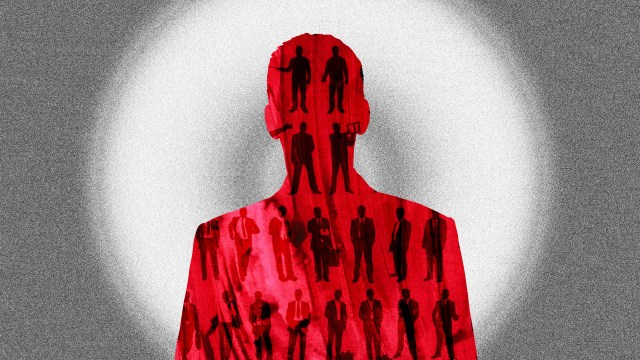Groupthink is for mindless pawns, but group thinking will push humanity further

- There is a paradox in the way society approaches “groupthink.” On the one hand, groupthink is praised when it applies to artistic movements; on the other hand, it is condemned when it applies to politics and religion.
- In reality, we need groups to focus our thinking and to build on the ideas of others. From science to society, groups allow those on the margins to challenge the mainstream.
- The problem arises when groups isolate themselves. To make the world a better place, disagreeing groups must be in constant communication.
In the early 1990s, a group of women in Olympia, Washington started to make punk music that expressed rage at the patriarchy. This was the beginning of the Riot grrl movement.
Riot grrls exemplified a shared approach to art and community, a shared set of (feminist, politically progressive) concerns, a shared (punk) aesthetic, and shared cultural practices (such as zine-making). These commonalities among group members, which are sometimes articulated in manifestos stating core beliefs and values, are characteristic of artistic movements in general. Impressionism, futurism, surrealism, Mexican muralism, hip-hop, and techno, among so many others, all unify their participants under shared sensibilities and practices.
We tend to think that the existence of artistic movements is a good thing. In contrast, in non-artistic contexts, shared worldviews and ways of thinking elicit suspicion. This suspicion is often captured in accusations of groupthink. We can see this in criticisms of Twitter mobs, religious cults, and partisan political polarization. In all these cases, participants are charged with the sin of groupthink and then summarily dismissed.
This raises a puzzle. A social group where members think in the same way arouses suspicion. In contrast, the shared worldviews of artistic movements elicit praise. Why this distinction? And should we continue to draw it?
No. Instead, we should give up our generalized suspicion of groups with shared worldviews. Groups can, of course, go wrong. But aligning our core beliefs with others in groups is key to our collective ability to learn about the world. We should think of such internally aligned groups a little more like we think about artistic movements: as part of the best way to organize human thinking and creativity.
Rethinking groupthink
The term “groupthink” was introduced by Irving Janis, a mid-20th century U.S. psychologist who had spent time in the Army, to explain U.S. military policy failures, such as the Bay of Pigs fiasco and the U.S.’s failure to anticipate Pearl Harbor. Encapsulating the all-American suspicion of anything smelling of collectivism, Jarvis blamed these failures on the dangers of group consensus. Groupthink, for Janis, is what happens when a group has such a strong desire to reach an agreement that its members can no longer think clearly about the world, and therefore come to bad decisions.
This definition doubly bakes negative connotations into groupthink. First, it specifies that its results are bad decisions. Second, it makes group convergence suspicious — whenever we find it, we should be on the lookout for problematic convergence. The concept of groupthink makes it easy to slide from the fact that a group thinks in a unified way, to claiming that members of such groups are mindless pawns, and eventually to dismissing their views.
I want to push back. By starting from artistic movements and their convergence, we can shine a light on the neglected virtues of groups sharing worldviews and ways of thinking.
Relying on others
Riot grrls were a dense network of musicians, artists, and activists, communicating with one another via zines, workshops, and concerts, modeling their music on each other’s, sharing skills and ideas, and building on one another’s influence. They didn’t sit alone in a room trying to figure out what to make from scratch.
The same applies to learning, forming opinions, and devising new theories: it inevitably brings in others. In writing this article, I asked myself questions like: What are some interesting artistic movements to talk about? Who came up with the term “groupthink”? Is it always bad for groups to share a worldview?
To answer these questions, I relied on others, and on knowledge structures built by others, at every step. The starting point — my own work as a philosopher — already incorporates years of relying on others through reading, discussion, and criticism. And then I read academic articles about groups who share political views, asked friends for their opinions on groupthink, checked Wikipedia (yes, academics check Wikipedia), and went out for tacos and hijacked the conversation into a debate about groupthink. (I would recommend doing all of these, especially pestering your friends over tacos.)
The lesson: To learn and think about the world, we are dependent on others for anything beyond what we can see with our own eyes and infer from it. People who share beliefs with others around them aren’t failing. Doing so is just part of being a limited agent.
Persistent Proutians
What is distinctive of artistic movements is that they involve reliance on specific others, namely, other movement members with whom you share (or aspire to share) a project. This is what leads to the development of distinctive, expressive styles.
This involves, also, not relying on some others. Movements splinter; there is never just The One Single Movement. At the same time as Bikini Kill was praising rebel girls, the grunge and techno scenes were growing, hip-hop was in its golden age, and R&B-infused romantic songs were topping the charts.
There aren’t many advocates for replacing this colorful variety and heated disagreement with The One Single Movement (or with no movements at all). It would be mind-numbingly boring. Imagine if you could only listen to techno, or only go to impressionist exhibitions. And it would stifle possibilities for creation and new ways of seeing. In fact, new and improved ways of seeing are particularly important to understanding the world. As the history of science illustrates, we are more likely to get this when there are different groups working within different paradigms.
In 1815, William Prout, a British physician who moonlighted as a chemist, proposed that the atomic weights of all chemical elements are whole numbers (that is, multiples of hydrogen, which has an atomic weight of 1). Despite mounting counterevidence to his proposal, his followers held on to it, hypothesizing that the many anomalies were due to faulty experimental techniques. A century later, the Proutian view was acknowledged as superior (and the word “proton” coined to honor Prout).
It must have been exasperating for other chemists that Proutians stuck around, blindly following the Proutian doctrine in the face of mounting counterevidence. Nonetheless, it was good for chemistry that they did.
We can generalize from this case by drawing on the work of the philosopher of science Imre Lakatos. Lakatos argued that it is good for scientific communities to include dissenting groups. Science makes more progress when theories that are not supported by the current evidence, which is inevitably limited, continue to be developed. By letting a thousand flowers bloom, including ones that don’t look so good by today’s lights, we are more likely to incrementally discover better theories. (Once we get to those pie-in-the-sky theories, we might want everyone to converge. But that’s not happening anytime soon.)
A better world through group thinking
If anything, this is even more evident in the social and political domain. Mainstream perspectives at any time exclude valuable information. Most notably, they exclude the experiences and perspectives of the groups they marginalize. Such marginalized perspectives need to be nourished. They need space to grow and develop into challenges to dominant worldviews. Here, groups are key again. Individuals in isolation, without community support, input, and discussion, are not likely to arrive at compelling challenges.
In the early 1970s, Black women found it hard to have their voices heard in either feminist spaces, which were predominantly white, or Black liberation spaces, which were predominantly male. In response, they started to organize spaces for and by Black women. In these spaces, Black women could openly discuss their experiences and build a shared set of commitments. This is described in the much-celebrated Combahee River Collective statement. Activists found similarities among their experiences — such as the childhood experience of being labeled “smart-ugly” as bookish Black girls. They traced connections between these experiences and their social position as Black women. And they developed new concepts and terms to understand the social world, such as the concept of identity politics.
Collectives at the margins start with information and concerns that are internally aligned yet different from the mainstream. This enables them to build novel worldviews that can pose a real challenge to dominant ways of thinking. And, much like how Proutians were crucial to the development of chemistry, such groups might be what we need to develop a better society.
Of course, for these successes to occur, certain background conditions need to be in place. As the philosopher of science Kevin Zollman has shown, we need channels of communication between disagreeing groups to get these benefits. When groups are isolated, we should not expect a convergence onto more accurate views over time: instead, each group might end up with its own incorrect view, and with no resources to improve.
Further, some groups’ views might be beyond the pale: too wildly unsupported by the evidence to deserve to be considered, or too hateful to merit inclusion in the public space. But needing to think about when and why groups go wrong is not the same as rejecting the role of groups, or focusing single-mindedly on their risks.
We need others, not the fantasy of radical individual autonomy. At the same time, our reliance on others should not be a matter of forming a single community. Given imperfect knowledge, we do best by structuring our attempts to learn and think about the world in diverging groups, each singing in its own key.





